Understanding Blindness in Cats
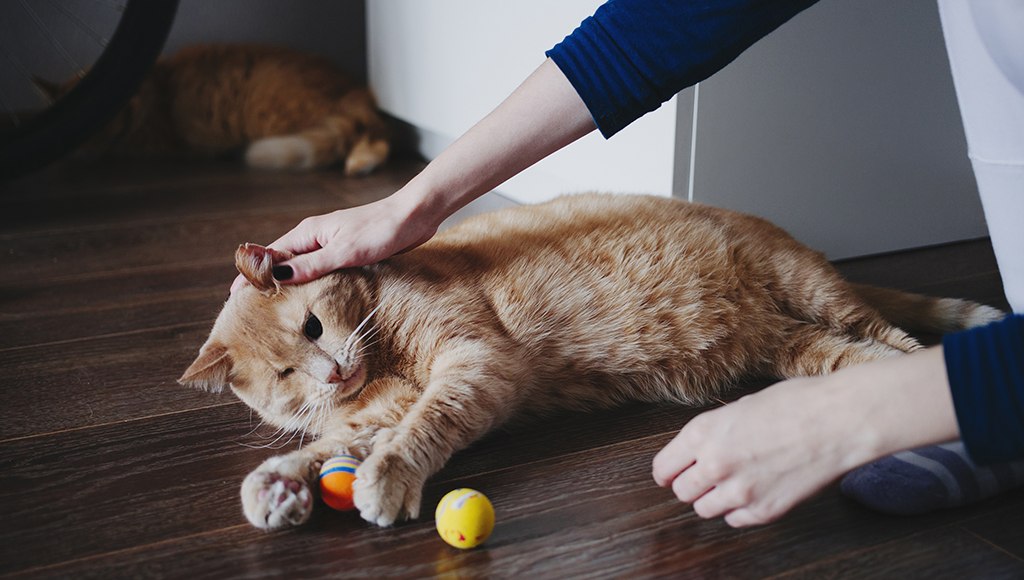
Blindness is a condition that affects cats, just as it does humans. It can occur due to various factors, including age-related degeneration, congenital conditions, or acquired diseases. Blindness in cats can range from partial vision loss to complete blindness.
When a cat is blind, their other senses become heightened to help them navigate and explore their surroundings. While they may not see objects or obstacles, blind cats rely on their hearing and sense of smell to understand the world around them.
It is important for cat owners to understand the challenges faced by blind cats and provide them with a safe and enriching environment. By understanding their limitations and adapting our homes accordingly, we can create an environment where blind cats can thrive and enjoy their lives to the fullest.
Blindness should not limit a cat's ability to explore and play. With some modifications and extra care, blind cats can lead happy and fulfilling lives.
A Common Causes of Blindness in Cats

There are several common causes of blindness in cats. One of the main causes is age-related degeneration, which can lead to gradual loss of vision over time. Another common cause is congenital conditions, where cats are born with visual impairments. These conditions can be hereditary or caused by infections during pregnancy.
Infections and diseases can also contribute to cat blindness. Conditions such as Feline Immunodeficiency Virus (FIV) and Feline Leukemia Virus (FeLV) can affect a cat's immune system and lead to ocular complications. In addition, conditions like glaucoma, cataracts, and retinal detachment can cause vision loss in cats.
It's important for cat owners to be aware of these potential causes so they can monitor their cat's health and seek veterinary care if necessary. Regular veterinary check-ups can help detect any early signs of vision problems and provide appropriate treatment options.
B Symptoms and Challenges Faced by Blind Cats
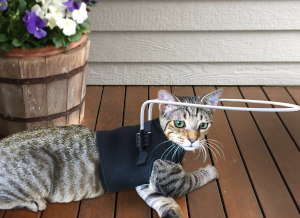
Blind cats face several symptoms and challenges that can affect their daily lives. One of the primary symptoms is visual impairment, where the cat may have difficulty navigating their surroundings or find it challenging to locate objects or food. They might also display increased clumsiness and bump into furniture or walls more often.
Challenges for blind cats include a heightened dependency on their other senses, such as hearing and smell, to navigate and understand their environment. They may experience anxiety or stress due to the loss of their sight, which can manifest in behavior changes like increased vocalization or hiding. Blind cats also face potential risks from hazards in their environment, as they are unable to see dangers such as open windows or sharp objects.
To help blind cats overcome these challenges, creating a safe and stimulating environment is crucial. By understanding their limitations and providing appropriate support, owners can significantly improve their blind cat's quality of life.
Creating a Safe Environment for Blind Cats

Creating a safe environment for blind cats is essential to ensure their well-being and prevent accidents. One of the first steps is to remove hazards and obstacles that could pose a risk to the cat's safety. This includes securing cords, blocking off areas with sharp objects, and covering open windows or balconies.
Providing a layout with sensory cues can also help blind cats navigate their surroundings more easily. Using different textures on the floor or walls can serve as markers for different areas in the house. Scented markers or audio cues can also assist them in recognizing specific locations.
Enhancing their sense of hearing and smell is crucial for blind cats. Owners can incorporate auditory and scent stimuli throughout the house to engage their senses and aid in orientation.
Incorporating interactive toys and treats into the environment encourages blind cats to explore and play. These toys should provide stimulation through sound, texture, or scent to keep them engaged.
By creating a safe environment that stimulates their other senses, blind cats can adapt more easily and enjoy a fulfilling life in their homes.
A Removing Hazards and Obstacles

To create a safe environment for blind cats, it is crucial to remove any potential hazards and obstacles that could pose a risk to their safety. This includes securing cords and wires to prevent entanglement and blocking off areas with sharp objects that they might bump into or injure themselves on. Open windows or balconies should be covered to prevent accidental falls.
Furniture arrangements should be modified to ensure clear pathways for the cat’s movement without any obstructions. Cluttered areas should be decluttered, ensuring there are no items that the blind cat could trip over or get stuck under.
Additionally, evaluating the placement of furniture and other large objects can help prevent accidents. Sharp edges should be covered, and unstable furniture or objects should be secured to avoid tipping over.
By removing hazards and obstacles from their surroundings, blind cats can navigate their environment more safely and comfortably, reducing the risk of accidents and injuries.
B Providing a Layout with Sensory Cues

To help blind cats navigate their environment more effectively, providing a layout with sensory cues can be highly beneficial. One way to do this is by using different textures and surfaces throughout the home. By placing rugs or mats in specific areas, blind cats can differentiate between different spaces through touch.
Strategic placement of furniture can also serve as landmarks for blind cats. They can use these larger objects to orient themselves and understand the layout of the room. Placing scratching posts or vertical structures near doorways or corners can further assist in creating reference points for exploration.
In addition, incorporating scent markers around the house can also aid blind cats in familiarizing themselves with their surroundings. This can be done by rubbing a cloth on different objects or using scented sprays on certain surfaces.
By providing a layout with sensory cues such as textures, furniture placement, and scent markers, blind cats are able to better understand their environment and navigate with increased confidence and independence.
Enhancing the Sense of hearing and Smell
To compensate for their loss of vision, enhancing the sense of hearing and smell can greatly benefit blind cats. Providing auditory and scent stimuli throughout the home can help them navigate and interact with their environment more effectively.
Auditory stimulation can be achieved by playing gentle background music or leaving a radio on in certain areas of the house. This will provide auditory landmarks and familiar sounds that blind cats can use to orient themselves.
Incorporating scent stimuli is also beneficial. Placing scented toys or treats in different locations can encourage exploration and help blind cats identify specific areas of the home. Additionally, using catnip or other appealing scents on scratching posts or vertical structures can entice blind cats to approach and explore these areas.
By enhancing the sense of hearing and smell, blind cats are better equipped to understand their surroundings, engage in play, and feel more confident navigating their homes independently.
A Using Auditory and Scent Stimuli

To enhance the senses of hearing and smell in blind cats, auditory and scent stimuli can be utilized. Gentle background music or leaving a radio on in certain areas of the house can provide auditory landmarks that blind cats can use to orient themselves. This helps them navigate their surroundings more effectively.
Incorporating scent stimuli is also beneficial. Placing scented toys or treats in different locations encourages exploration and helps blind cats identify specific areas of the home. Using catnip or other appealing scents on scratching posts or vertical structures can entice blind cats to approach and explore these areas.
By providing auditory cues and scent stimuli, blind cats become better able to understand their environment, engage in play, and feel more confident navigating their homes independently. It is important to note that these sensory enhancements should be introduced gradually to prevent overwhelming the cat's senses.
B Incorporating Interactive Toys and Treats
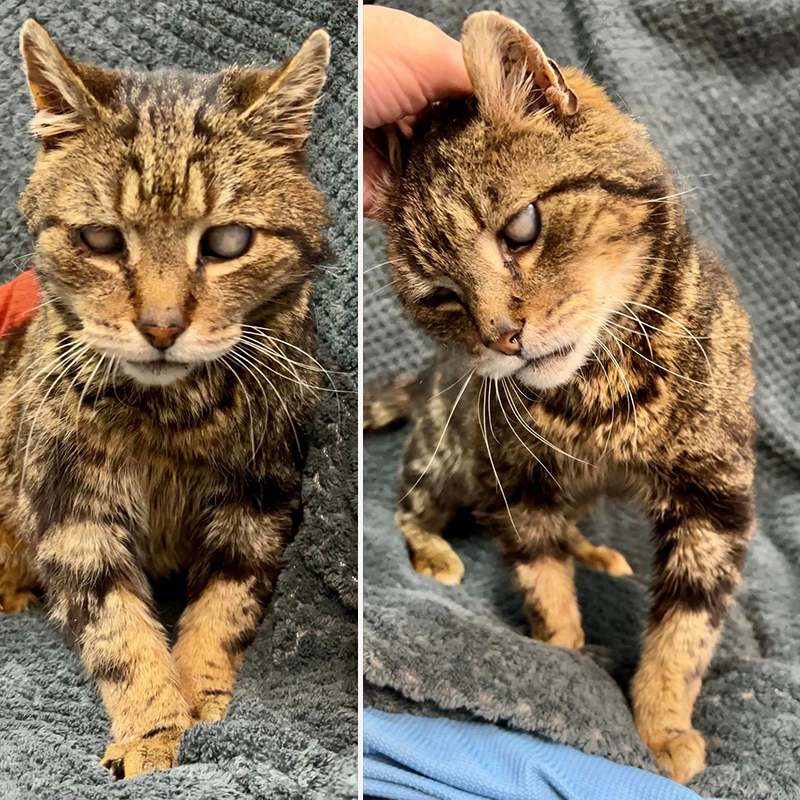
Incorporating interactive toys and treats is an excellent way to stimulate and engage blind cats. These toys are designed to provide sensory feedback, promoting mental stimulation and physical activity. Choose toys with different textures, sizes, and sounds to appeal to the cat's senses.
Interactive toys can include ones that make noise when touched or moved, such as crinkly balls or rattling mice. Toys with hidden compartments for treats or food puzzles can also keep blind cats entertained while providing a rewarding challenge.
Additionally, treat-dispensing toys can help encourage active play by motivating the cat to explore and interact with the toy in order to retrieve the treats inside. These interactive toys not only provide entertainment but also help strengthen the bond between the owner and the blind cat through shared playtime activities.
Remember to supervise playtime to ensure safety and remove any small parts that could be easily swallowed. Interactive toys and treats can greatly enhance a blind cat's quality of life by stimulating their senses and providing mental enrichment.
Promoting Exploration and Play
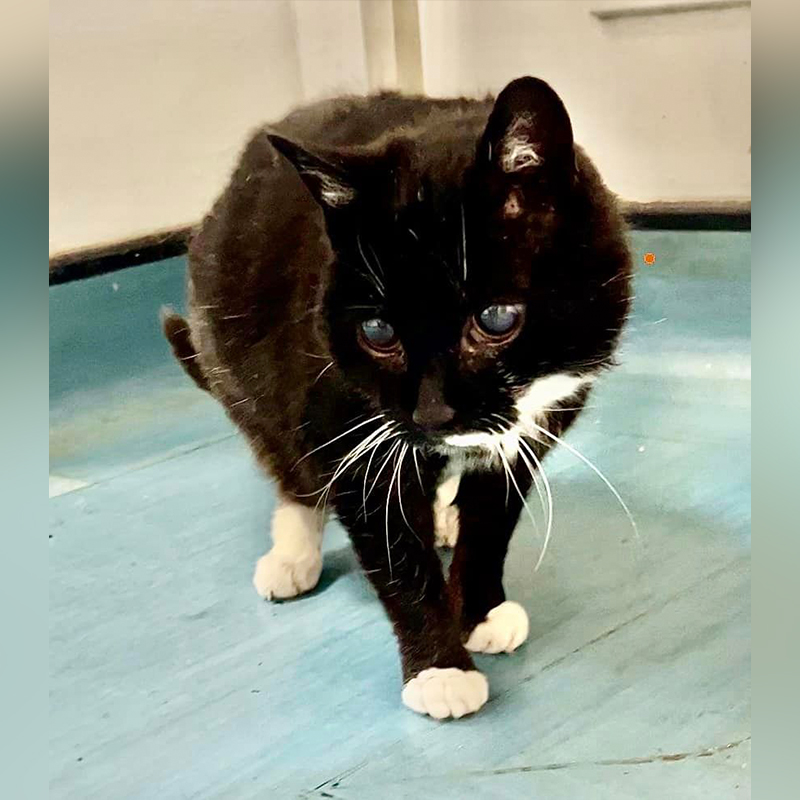
To promote exploration and play in blind cats, it is important to provide them with opportunities to engage their other senses and encourage physical activity. One way to achieve this is by using interactive toys that appeal to their sense of hearing and touch. Toys that make noise when touched or moved, such as crinkly balls or rattling mice, can grab their attention and stimulate play.
Creating multi-level play areas can also encourage exploration. This can be achieved by incorporating ramps, steps, and different levels for the cat to climb on. The use of scratching posts and interactive furniture can also provide a stimulating environment for the blind cat.
Additionally, engaging in interactive play sessions with the cat using toys like fishing rod-style toys or laser pointers can encourage exercise and keep them mentally stimulated. It's essential to interact with the blind cat in a gentle and patient manner, allowing them to explore and play at their own pace.
By promoting exploration through interactive toys and providing accessible play areas, blind cats can enjoy enriching play experiences that contribute to their overall well-being.
A Encouraging Physical Activity and Exercise

Encouraging physical activity and exercise is crucial for the well-being of blind cats. Despite their blindness, they can still engage in various activities that promote movement and exercise. One way to stimulate their physical activity is through interactive play sessions using toys specifically designed for blind cats. These toys should appeal to their other senses, such as hearing and touch, by making noise or having interesting textures.
Engaging in gentle play with fishing rod-style toys or laser pointers can help blind cats stay active and mentally stimulated. It's important to provide a safe and obstacle-free environment during these play sessions to prevent any accidents.
In addition to interactive play, incorporating exercise opportunities in the form of climbing structures, scratching posts, and ramps can encourage blind cats to explore their surroundings and engage in physical activity. Creating an enriching environment with different levels for them to climb on not only stimulates exercise but also fosters a sense of adventure and exploration.
By actively encouraging physical activity and exercise, blind cats can maintain their agility, reduce boredom, and lead healthier lives overall.
B Designing Multi-Level and Accessible Play Areas

Designing multi-level and accessible play areas is essential for blind cats to explore and have fun in their environment. By creating different levels, such as shelves or ramps, blind cats can navigate their surroundings and experience vertical space. This allows them to engage in climbing and jumping activities, promoting exercise and mental stimulation.
To ensure safety, it is important to make these play areas easily accessible for blind cats. Consider placing high-quality carpeting or non-slip mats on surfaces to provide traction and prevent slips or falls. Install secure railings or barriers to guide blind cats along the edges and prevent accidental falls.
Incorporating tactile elements into the play areas can also enhance sensory experiences for blind cats. Adding textured surfaces, such as sisal ropes or fleece-covered platforms, allows them to feel their way around and provides a more enriching play environment.
By designing multi-level and accessible play areas, blind cats can enjoy physical activity, exploration, and interactive play while being safe and stimulated in their surroundings.
Assisting Daily Activities for Blind Cats

Assisting daily activities for blind cats is crucial to ensure their well-being and comfort. One important aspect is assisting with feeding and drinking. It is beneficial to place food and water dishes in easily accessible locations and use shallow bowls to prevent spills. Additionally, adding textured mats or rugs underneath the dishes can help blind cats locate them through touch.
Establishing a consistent routine and familiarity is also essential for blind cats. Keeping food, litter boxes, and bedding in fixed locations allows them to navigate their environment more easily. Moreover, maintaining a predictable daily schedule helps blind cats feel secure and reduces potential stress.
Providing mental stimulation is another way to assist blind cats in their daily activities. Interactive toys that make sound or have different textures can engage their senses of hearing and touch. Puzzle feeders or treat-dispensing toys can also provide mental enrichment during meals.
By assisting with daily activities such as feeding, establishing routine, and providing mental stimulation, we can support blind cats in living fulfilled lives within the safety of their homes.
A Assisting with Feeding and Drinking

Assisting with feeding and drinking is crucial for blind cats to ensure their well-being and comfort. Providing easily accessible locations for food and water dishes is essential. Using shallow bowls can help prevent spills, and adding textured mats or rugs underneath the dishes can assist blind cats in locating them through touch.
In addition to physical placement, establishing a consistent routine for mealtimes is important for blind cats. Keeping food dishes in fixed locations allows them to navigate their environment more easily. It is also beneficial to maintain a predictable daily schedule, as this helps blind cats feel secure and reduces potential stress.
Interactive toys can be used during feeding time to provide mental stimulation for blind cats. Puzzle feeders or treat-dispensing toys engage their senses of hearing and touch, making mealtime both nourishing and mentally enriching.
By assisting with feeding and establishing a consistent routine, we can support blind cats in maintaining their independence and living fulfilled lives within the safety of their homes.
B Establishing a Consistent Routine and Familiarity

Establishing a consistent routine and familiar environment is crucial for the well-being of blind cats. By maintaining a predictable daily schedule, it helps them feel secure and reduces stress. This includes keeping their food dishes in fixed locations, allowing them to navigate their environment more easily.
In addition to feeding time, establishing regular play and exercise sessions can provide blind cats with mental stimulation and physical activity. This can involve interactive toys that engage their other senses like hearing and touch.
Creating a familiar environment also involves keeping furniture and objects in the same place, minimizing changes or rearrangements that may confuse or disorient them.
By providing consistency and familiarity in their daily lives, we can support blind cats in adapting to their condition, promoting a sense of security, independence, and wellness.
Conclusion

In conclusion, creating a safe and stimulating environment is essential for blind cats to thrive. By understanding their unique needs and challenges, we can make necessary adjustments to support their exploration and play. Removing hazards and providing sensory cues can help them navigate their surroundings with confidence. Enhancing their sense of hearing and smell through auditory and scent stimuli promotes engagement and mental stimulation. Incorporating interactive toys and treats encourages playtime and provides enrichment opportunities. Designing multi-level and accessible play areas allows blind cats to explore and exercise freely. Assisting with daily activities like feeding and establishing a consistent routine fosters a sense of security, independence, and familiarity. By adapting our homes in these ways, we create a space that promotes the well-being and happiness of our adorable blind feline companions.
Comparison between Different Home Adaptation Techniques for Blind Cats

When it comes to adapting homes for blind cats, there are various techniques that can be used to create a safe and stimulating environment. One technique is to remove hazards and obstacles from the cat's surroundings, ensuring that they have clear pathways and are less likely to injure themselves. Another technique is to provide a layout with sensory cues, such as using different textures on the floors or walls to help the cat navigate their surroundings.
Enhancing the senses of hearing and smell can also be achieved through auditory and scent stimuli, which can encourage engagement and mental stimulation for blind cats. This can be done by incorporating toys that make noise or diffusing scents throughout the home.
In order to promote exploration and play, interactive toys and treats can be used. These toys not only provide entertainment but also encourage physical activity and exercise.
Designing multi-level and accessible play areas allows blind cats to explore and move around freely. This gives them the opportunity to exercise both physically and mentally.
Assisting with daily activities such as feeding and drinking is crucial for blind cats. By providing easily accessible food bowls and water sources, caregivers can ensure that their blind feline companions can eat and drink comfortably.
Establishing a consistent routine and familiarity in the home can help blind cats feel secure. This includes keeping furniture in the same place, maintaining a predictable daily schedule, and providing designated rest areas where the cat feels safe.
Overall, these various home adaptation techniques contribute to creating an environment that supports exploration, play, safety, and well-being for blind cats.
VERSION 2:
When it comes to adapting homes for blind cats, there are several techniques that stand out as effective means of doing so:
- Safety Measures: Removing hazards like sharp objects or loose cables helps prevent injuries. Providing barriers around stairs or open balconies ensures their wellbeing.
- Sensory Cues: Incorporating textured rugs or distinctive scent cues like scratching posts encourages blind cats' spatial awareness and promotes exploration.
- Auditory & Scent Stimuli: Interactive toys with bells, chimes, or scented catnip can pique their curiosity and engage their senses during playtime.
- Multi-Level Play Areas: Designing multi-level play areas allows blind cats to explore and exercise freely, offering opportunities for physical activity.
- Assistive Devices: Utilizing devices such as raised food and water dishes or automated litter boxes can help blind cats navigate daily activities independently.
- Consistent Routine: Having a predictable schedule for feeding, playing, and resting helps blind cats feel secure in their environment, promoting familiarity.
By implementing these techniques, caregivers can create an enriching environment that supports the exploration, play, independence, and well-being of blind cats.
Frequently Asked Questions
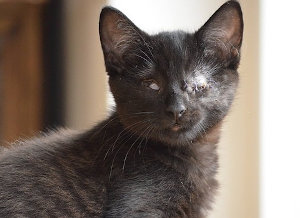
Q: Can blind cats live a happy and fulfilling life?
A: Yes, blind cats can still live a happy and fulfilling life. With the right adaptations and support from their caregivers, blind cats can navigate their surroundings, engage in play, and enjoy a good quality of life.
Q: How can I make my home safe for a blind cat?
A: To make your home safe for a blind cat, you should remove hazards such as sharp objects or loose cables. Provide barriers around stairs or open balconies to prevent falls or accidents. Creating clear pathways with sensory cues like textured rugs can also help them navigate more easily.
Q: Can blind cats play with toys?
A: Absolutely! Blind cats can still enjoy playtime with toys that incorporate auditory or scent stimuli. Toys with bells, chimes, or scented catnip can engage their senses and provide mental stimulation.
Q: Do blind cats need assistance with daily activities?
A: Blind cats may require some assistance with daily activities such as finding food and water sources. Providing raised food and water dishes can make it easier for them to locate their meals.
Q: How important is routine for blind cats?
A: Routine is essential for blind cats as it helps them feel secure and familiar in their environment. Maintaining consistent schedules for feeding, playing, and resting will give them a sense of stability.
Remember, each cat is unique, so it's always beneficial to consult with a veterinarian or animal behaviorist for personalized guidance on how to care for a blind cat.




0 Comments